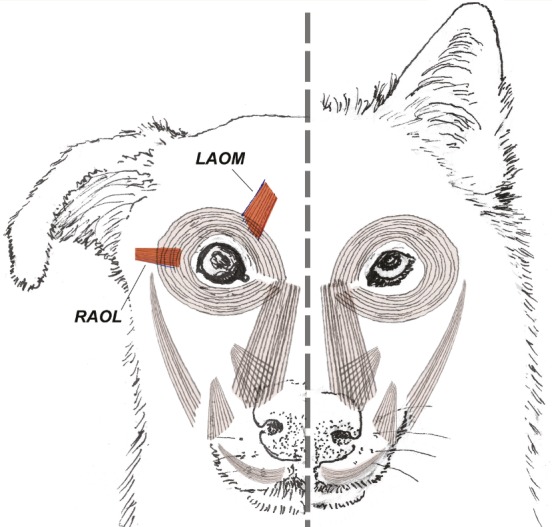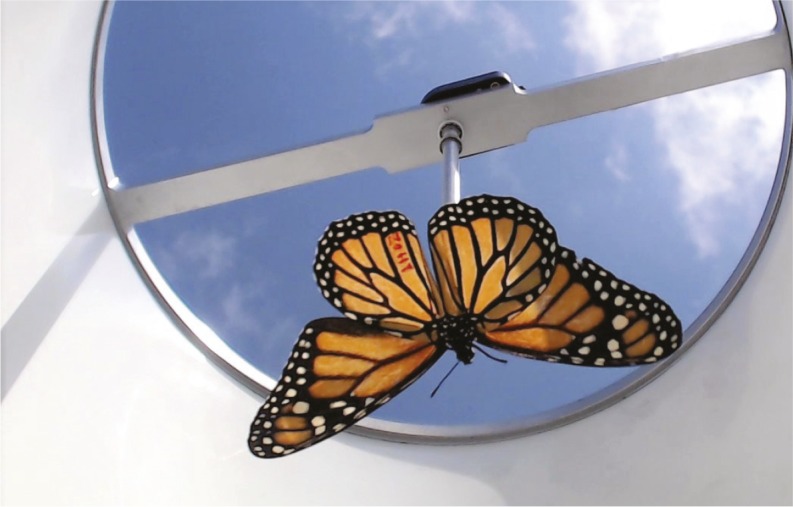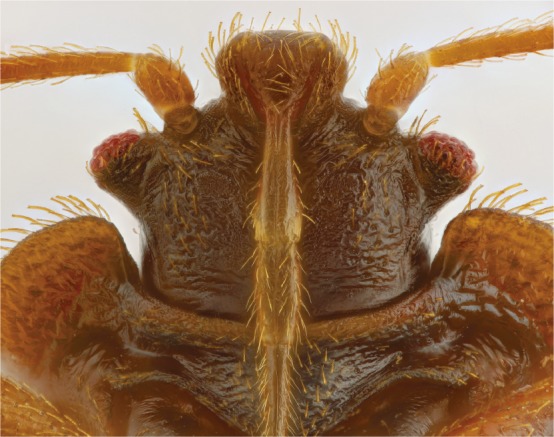Evolution of facial anatomy in dogs

Facial musculature in the dog (Left) and wolf (Right) with anatomical differences highlighted in red. LAOM: levator anguli oculi medialis muscle; RAOL: retractor anguli oculi lateralis muscle.
The anatomy and behavior of dogs, which were domesticated more than 33,000 years ago, have evolved to enable communication with humans. Dogs can raise their inner eyebrows, making their eyes appear larger and infant-like and producing a movement similar to one made by humans when they are sad. To determine whether this eyebrow movement is a result of evolution, Juliane Kaminski et al. (pp. 14677–14681) compared the facial anatomy and behavior of dogs and gray wolves; 4 wild wolves and 6 domestic dogs were used for the comparative facial anatomy analysis, and 9 wolves and 27 shelter dogs were used for the behavioral analysis. The muscle that enables the eyebrow to be raised was present in dogs but was represented by scant fibers in wolves. Unlike gray wolves, almost all dogs studied possessed the muscle that pulls the lateral corner of the eyelids toward the ears. The only dog species without the muscle was the Siberian husky, which is among ancient dog breeds. When exposed to a human for 2 minutes, dogs more frequently raised their inner eyebrows and at higher intensities than wolves; dogs, but not wolves, produced the highest intensity movement. The findings suggest that expressive eyebrows in dogs may be a result of human preferences that influenced evolutionary selection. — M.S.
Modeling antibiotic resistance and tolerance interplay
The ability of bacteria to overcome antibiotic treatment is a major global public health concern. Bacteria can withstand antibiotic treatment either through resistance—an inherited ability to grow indefinitely in the presence of antibiotics—or tolerance, which prolongs the duration that bacteria can survive antibiotic treatment. How resistance and tolerance interact to increase bacterial survival under antibiotics remains unclear. Irit Levin-Reisman, Asher Brauner, et al. (pp. 14734–14739) investigated the interactions between tolerance and resistance mutations by measuring the abundance of surviving bacteria after a bactericidal antibiotic treatment. The authors found that in several double mutant strains that had evolved under intermittent antibiotic treatment, tolerance and resistance mutations interacted with a small but significant synergistic effect. The synergistic interaction remained even when accounting for mutations that conferred tolerance only to a subpopulation of bacterial cells, a phenomenon known as antibiotic persistence. The authors obtained similar results when they analyzed the evolution of a different kind of tolerance under different antibiotic classes. Thus, antibiotic tolerance and resistance mutations interact synergistically, and understanding these interactions could help design effective antibiotic treatments, according to the authors. — S.R.
Migration of butterflies bred in captivity

Tethered monarch butterfly flying in the flight simulator.
Butterfly enthusiasts buy monarch butterflies from commercial breeders for special events and later release the butterflies in hopes that they will fly south to their Mexican overwintering grounds. However, the impacts of captive breeding of monarch butterflies are unclear. Ayşe Tenger-Trolander et al. (pp. 14671–14676) compared behavioral, morphological, and physiological traits among descendants of commercially bred and wild-caught monarchs in Chicago. To measure orientation behavior, the authors tested monarchs that emerged in autumn in a flight simulator. Although the commercial and wild monarchs were raised side by side, only the wild monarchs flew south. The forewing shape of commercial monarchs was smaller and rounder than those of wild monarchs. However, the number of mature eggs decreased in both groups in autumn, indicating a decoupling of reproductive arrest and behavior. In addition to the release of commercial monarchs, monarch hobbyists rear wild-caught monarchs indoors for eventual release. To determine whether indoor captive rearing effectively induces migratory behavior, the offspring of wild monarchs were reared in indoor chambers mimicking autumn and summer conditions. Compared with butterflies reared outdoors, monarchs reared in chambers with autumn-like conditions did not orient south and had higher egg counts. According to the authors, captive breeding may adversely affect the ability of monarchs to migrate successfully. — M.S.
Immune anticipation and bed bug feeding

Bed bug.
Insects can adapt immune responses to defend against predicted infections. However, whether female bed bugs up-regulate immune responses when they anticipate mating, which is linked to increased infection risk due to traumatic insemination, remains unclear. Michael Siva-Jothy et al. (pp. 14682–14687) examined changes to the immune systems of female bed bugs exposed to feeding cycles associated with traumatic insemination; female bed bugs undergo high levels of traumatic insemination when they feed at rates that support maximum egg production. The authors detected lysozyme-like activity (LLA) resulting in induced antibacterial humoral immune responses in female bed bugs fed at regular intervals every 7 days, whether or not they received a stimulus mimicking traumatic insemination. When female bed bugs mated in fixed durations, they showed an 18.5% increase in LLA when they received predictable access to food, whereas female bed bugs on an unpredictable feeding schedule exhibited a 51% decrease in LLA. Compared with unpredictable feeding, predictable feeding was tied to a 22% increase in longevity. The findings suggest that reproductive immune anticipation in female bed bugs may be influenced by hunger and feeding cycles, according to the authors. — M.S.
Trends in Antarctic sea ice
The extent of Arctic sea ice has been declining since the late 1970s, consistent with global climate warming. In contrast, trends in Antarctic sea ice coverage have been positive over the same period. Claire Parkinson (pp. 14414–14423) analyzed satellite microwave measurements of Antarctic sea ice spanning the 40-year period 1979–2018. The yearly average sea ice extent for the Southern Ocean as a whole increased gradually from 1979 to 2014, reaching a record high of 12.8 million km2 in 2014. Sea ice extent subsequently declined precipitously between 2014 and 2017, reaching a record-low yearly average of 10.75 million km2 in 2017, with a record-low monthly average of 2.3 million km2 in February 2017. The trend in Antarctic sea ice extent over the entire 40-year record is positive, but with only half the magnitude of the 1979–2014 trend. The decline in yearly average sea ice in the Antarctic between 2014 and 2017 exceeds that observed in the Arctic over 3 decades. According to the author, the results provide further data for testing models of Antarctic sea ice and elucidating links between climatic modes and oscillations that drive sea ice changes. — B.D.


